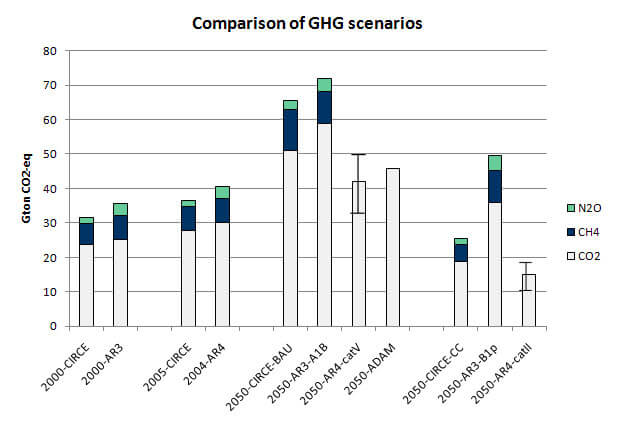The major contributions of the JRC EDGAR team to the CIRCE project were:
Four emission scenarios of greenhouse gas and air pollutants for the years 2000, 2010, 2025 and 2050, ranging from no global action on climate change and air pollution (BAU) towards a global climate policy (CC). To evaluate to what extend the EU27 countries are able to improve the environmental situation in the Mediterranean domain the BAP scenario explores strict EU27 air pollution measures and the CAP scenario explores the effect of combined EU27 climate and air pollution policies.
In general, GHG and air pollutants emissions increase from the year 2005 onwards when no further climate and air quality policies are implemented (BAU). The implementation of a global climate policy (CC) results in substantial co-benefits in terms of reduced air pollutant emissions. This is due to fuel shift and decreased fuel demand, resulting in global emission reductions (emissions compared to BAU in 2050) of GHG: CO2 (-63 %), CH4(-60 %) and N2O (-26 %).
A comparison between CIRCE and other references (IPCC, 2005) for the CO2, CH4 and N2O emissions in 2000/2005 and projections for 2050 is shown in the figure below. The emissions projections of SRES category V and A1B are in the same range as the BAU CIRCE projections. The same trend of the CC scenario is apparently observed in the emissions projections of SRES category II.
